
PLEASE NOTE – Bullaton Farm is on private land and the only access is the public footpath running above the farm.
There are numerous farms dotted around Dartmoor so why this page on Bullaton. It may sound sad but it is because of two very special features that can be seen here, those being two rick stands. Additionally to reach the farm is a gentle stroll down a typical Dartmoor lane which affords some fine views and a good mixture of flora. As you slowly descend into the valley it is as if time slowly ticks back with every step until you reach the secluded farm nestled safely in the valley bottom below.
The first documented mention of Bullaton appears in the Assize Rolls of 1244 where it is recorded as Boleton, Gover et al. p.469. This place-name consists of two elements; ‘Bole‘ which had probably mutated from the Anglo Saxon word bula meaning ‘bull’ or ‘steer’, Clarke Hall, p.60. and tun meaning ‘farm’, Clarke Hall, p.351. Therefore this would suggest that a some time in history Bullaton was a specialised farm where bulls or beef cattle were bred or kept. It may well have been that this was akin to the modern-day intensive beef units that can be found around the country?
It is thought that the farmhouse which is evident today dates back to the late Medieval period with its wing going back to the sixteenth or seventeen centuries. There are suggestions that the farmhouse may well have begun life as a typical Devon longhouse which in later years had several rooms added.
It was not until the early eighteenth century that the farm underwent a great deal of modernisation which reflected a period of agricultural prosperity in Devon. This initiative included the building of barn and orchard linhays, pigsties, and an ash house which took place possible between 1810 and 1830. Further additions came along between 1840 and 1889 which included a small cart shed, poultry houses, a shippon, a bullock shed and dung pit along with its trap.
Walking along the public footpath above the farm you can see a scattering of old farm implements such as a potato ridger, a tedder, a mowing machine along with some redundant granite gateposts. Amongst the farm structures are two of special import, the first being the Ash House which comprises of a small, rectangular structure built of granite. It has a corbelled, domed roof made of granite and would have at a door on its outer face, English Heritage, 2011, National Heritage List for England. SDV347072. This feature can just be made out from the public footpath just to the north of the farmhouse. The second item of interest are a pair of rick stands which probably date to the eighteen or mid-nineteenth centuries. They consist of low, circular platforms constructed of granite rubble, each rick stand has a granite projecting lip whose purpose would have been to prevent vermin such as rats and mice getting into the rick. Such features are said to be rare in Devon hence the reason for the visit. English Heritage, 2011, National Heritage List for England. SDV347072. There is also evidence of external wheels that probably ran belts which drove something like a threshing machine inside the building. Today all the buildings are Grade II listed buildings If you would like further details on the farm buildings then they can be found on the Heritage Gateway website – HERE
During the 1890s around 109 acres of Bullaton’s land was compulsory purchased to allow for the construction of the Trenchford Reservoir.
Up until 2011 the Dartmoor National Park Authority used Bullaton Farm to store a collection of old agricultural machinery. Amongst which were hay rakes, seed drills, ploughs, a threshing machine and a hay cart along with a variety of smaller farmhouse items such as a chaff cutter and milk separator. Work was also carried out on restoring and preserving the old farm buildings and on occasions the farm was open to guided walks. Today there are a few implements and relics sitting in the footpath field, these being a plough, a mower, a hay tedder? and a collection of grate gateposts.
In 2010 the owners held a dispersal sale of live and dead farming stock, modern machinery, implements, fodder and in other words lock, stock and barrel. Four years later in the July of 2015 47.92 hectares of pasture land and two buildings were put on the market along with some amenity woodland, at that time the guide price was £820,000.

Clarke Hall, J. R. 2004 A Concise Anglo-Saxon Dictionary, Cambridge Univ. Press, Toronto.
Gover, J. E. B., Mawer, A. & Stenton, F. M. 1998. The Place Names of Devon, Nottingham: English Place-Name Society.
 Legendary Dartmoor The many aspects past and present of Dartmoor
Legendary Dartmoor The many aspects past and present of Dartmoor

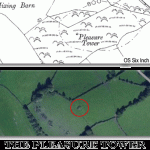
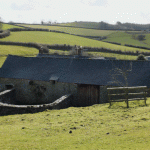
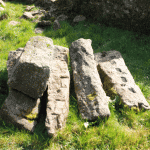
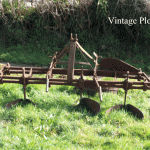
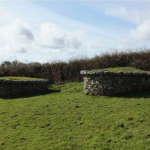
Back in the 90sI was invilved introducing a book,The Spirit of Nature with Devon County Council.
\Some works were undertaken at Bullaton Farmstead,these works are now in storage.As it was a community
Project the works are now being given back to the sites or museums in the area, you may have some ideas or suggestions if its not to much trouble.
Kind Regards Roger Polley